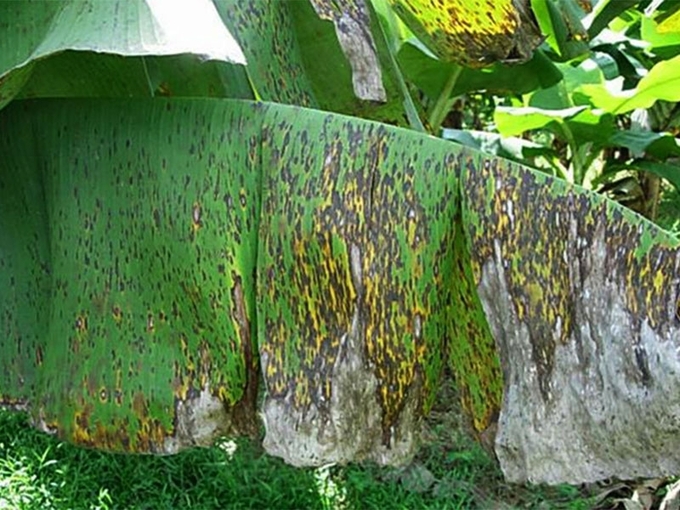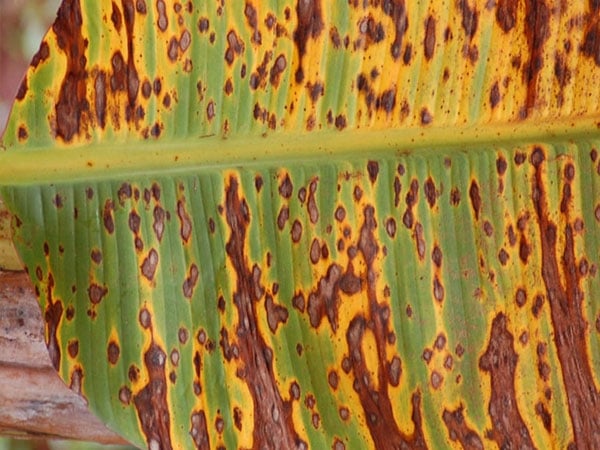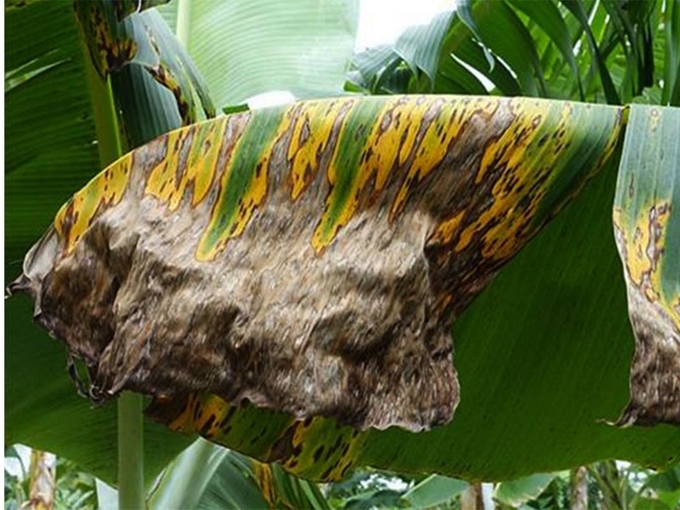Bananas are one of the top five crops in Lao Cai province. Currently, the province has about 3,380 ha of bananas, which are concentrated in Bat Xat, Muong Khuong, Bao Thang, Bao Yen and Lao Cai City districts. Lao Cai was allocated 14 primaries for growing bananas for export.

Sigatoka leaf spot disease has emerged and caused damage to bananas scattered in some specialized growing areas such as Ban Sen and Ban Lau communes (Muong Khuong) and Xuan Hoa communes (Bao Yen).
However, along with the intensive agriculture and the expansion of the concentrated banana-growing area, a number of pests and diseases have emerged and spread widely, such as the growth, development, and yield and yield of bananas in Lao Cai. According to the test results, Sigatoka leaf spot disease has emerged and caused damage to bananas scattered in some specialized growing areas such as Ban Sen and Ban Lau (Muong Khuong) communes and Xuan Hoa (Bao Yen) communes.
In order to proactively detect and effectively prevent the Sigatoka leaf spot disease that damages bananas, the Lao Cai Subdivision of Cultivation and Plant Protection has just made a written inquiry to the Ministry of Agriculture and Rural Development, the Ministry of Economy and the County Service Centers and cities Municipalities and cities step up investigation and detection of Sigatoka banana leaf spot disease, zoning and statistics of infected areas, and urgently set up prevention.
At the same time, promote information, propaganda and training, and guide farmers to self-inspect, detect and apply technical measures for timely and effective prevention of Sigatoka leaf spot disease in bananas. Recommend that the people’s committees of counties, cities and townships order timely prevention and control upon detection of harmful Sigatoka leaf spot disease on bananas in order to limit the impact on banana growth and yield.

Sigatoka leaf spot disease greatly affects the growth, development and yield of bananas.
Detection and prevention of Sigatoka leaf spot disease in bananas
According to the Food and Agriculture Organization of the United Nations (FAO, 2016): Sigatoka leaf spot is a dangerous disease that severely affects banana yields worldwide.
pathogens:
Sigatoka leaf spot is a combination of three banana fungal diseases including Sigatoka yellow spot (Pseudocercospora musae), Eumusae leaf spot (Pseudocercosporaeumusae) and Sigatoka black spot (Pseudocercospora fijiensis). The meristem spores are colorless, multicellular, size 20-80 pm x 2-6 pm, averaging 51.3-3.7 pm. The sporangia are located in the fruit of the gourd, colorless, consisting of two cells 14.4 – 1.8 x 15 – 16 h. Fruit bodies brown or black, diameter 47 – 72 pm. Colorless bag, size 29 – 36 x 20 – 23 o’clock.
Symptoms of illness:
In the early stages, disease symptoms usually appear on both sides of the 2nd, 3rd, and 4th leaf blades from the tip (yellow sigatoka appears on top and black sigatoka appears on the underside), forming a small reddish-brown striped spot parallel to the leaf veins , about 5-10 mm wide x 0.1-1 mm, usually concentrated on the left side and at the top of the banana leaves.
Later, the spots spread, turn black, and appear on the top of the banana leaves. In the middle period the striped patch spreads to a brown oval surrounded by a yellow halo. Towards the end, it turns black, finally, right in the middle, the spot turns gray, many connected spots make the leaf blade dry up into large spots, and the banana leaf soon withers and dies. Quail and small grapes, long ripe fruit, yellow or pale pink flesh, pungent taste.

Use disease-free varieties, do not take seedlings from diseased banana gardens as seeds.
Conditions for the development of the disease:
The suitable temperature for contracting the disease is 22-29 degrees Celsius, with temperatures below 25 degrees Celsius and above 29 degrees Celsius, the infection rate is low. About the relative humidity: within a week, the humidity is 90% continuously for 50 hours, it is easy to get infected. Rainfall: Rainfall during 3 weeks reaches 75 mm, which is prone to infection.
Precautions
To effectively prevent the disease, people should use a combination of measures as follows:
– Use disease-free varieties. Do not take seedlings from diseased gardens for seeds. Clean the garden and create ventilation for the banana garden, detect infected leaves and destroy them to limit the spread.
– Choose soil with a neutral or slightly alkaline pH. Never plant in acidic soil. Clean and clean the river regularly to ensure good drainage of the garden. Use rotted organic fertilizer (or manure treated with harmful fungi) in combination with Trichoderma or other biological products containing antagonistic fungi Trichoderma spp and actinomycetes such as Lactobacillus, Streptomyces… for N, P, K (it is recommended to use complex fertilizers, containing nitric nitrogen).
If the garden is ill early, use special drugs to treat diseases such as: Amistar®250 SC, Serenade SC. Or use alternating (alternating) drugs containing the following 3 active ingredients: propiconazole (Tiff Super, Hotisco…); chlorothalonil (Cythala 75WP, Daconil…); Mancozeb (Dithane, Dizeb, Manthane, Ankzeb…) mixed with organic mineral oil at a concentration of 0.3% to allow the drug to penetrate the plant thoroughly and kill harmful fungi better.

